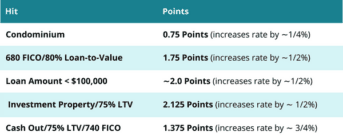
Are you dreaming of owning a home or looking to make a significant investment? Maximizing your purchasing power can be a game-changer, and 1st and 2nd combo loans might just be the key. These unique mortgage financing options, also known as piggyback loans or mortgage stacking, can help you unlock opportunities that were once out of reach. In this blog post, we’ll delve into the world of combo loans and explore how they can empower you to achieve your goals. From understanding loan-to-value ratios to exploring debt consolidation possibilities, let’s embark on this journey to optimize your purchasing power.
What Are 1st and 2nd Combo Loans, and How Do They Work?
1st and 2nd combo loans, also known as piggyback loans, are a financing option that involves taking out two mortgages simultaneously to fund the purchase of a home. These loans consist of a first mortgage, which covers the majority of the home’s purchase price or value, and a second mortgage that provides additional funds. 1st and 2nd Combo loans can typically only be used for owner-occupied properties that are used as a primary residence.
The first mortgage, as the primary loan, typically covers around 80% of the home’s value. This loan is secured by the property and carries a lower interest rate compared to the second mortgage. Borrowers often choose a fixed-rate mortgage or adjustable-rate mortgage (ARM) for the first mortgage, depending on their financial goals and market conditions.
The second mortgage, also referred to as a subordinate or junior mortgage, fills the gap between the down payment and the desired loan amount. It covers another 10% to 15% of the home’s value, reducing the need for a large down payment or private mortgage insurance (PMI). The second mortgage generally has a higher interest rate than the first mortgage due to its subordinate position.
One of the main advantages of utilizing a combo loan is the ability to avoid paying PMI. PMI is typically required when the down payment is less than 20% of the home’s value. By combining a first mortgage and a second mortgage, borrowers can reach an 80% loan-to-value (LTV) ratio, eliminating the need for PMI and potentially reducing their monthly payments.
Combo loans can also enable borrowers to access a larger loan amount while maintaining a favorable LTV ratio. This can be particularly beneficial in high-cost areas where property prices exceed conforming loan limits. Instead of applying for a jumbo loan, which often carries higher interest rates, borrowers can use a 1st and 2nd combo loan to keep the first mortgage within the conforming limit and utilize a second mortgage to cover the remaining balance.
However, it’s crucial to thoroughly evaluate the terms, interest rates, and repayment obligations associated with both the first and second mortgages before committing to this financing strategy.
What Are the Advantages of Utilizing a Combo Loan Over Other Mortgage Financing Options?
Utilizing a combo loan, which consists of a 1st and 2nd mortgage, offers several advantages over other mortgage financing options:
- Avoiding Private Mortgage Insurance (PMI): One significant advantage of combo loans is the ability to avoid PMI. When the down payment is less than 20% of the home’s value, lenders typically require PMI to protect themselves in case of default. By structuring a combo loan, borrowers can reach an 80% loan-to-value (LTV) ratio with the first mortgage, eliminating the need for PMI. This can result in substantial savings on monthly mortgage payments.
- Access to Larger Loan Amounts: Combo loans allow borrowers to access a larger loan amount while maintaining a lower LTV ratio. Typically, a first mortgage covers 80% of the home’s value, and the second mortgage fills the remaining gap between the down payment and the desired loan amount. This arrangement can be advantageous in high-cost areas where property prices exceed conforming loan limits. Instead of obtaining a jumbo loan, which often carries higher interest rates, borrowers can use a 1st and 2nd combo loan to keep the first mortgage within the conforming limit and secure a second mortgage to cover the additional funds.
- Favorable Interest Rates: Since the first mortgage carries a lower LTV ratio and represents the majority of the loan, it generally qualifies for more favorable interest rates compared to a standalone second mortgage. This can result in long-term savings on interest payments.
- Flexible Repayment Options: Combo loans offer flexibility in repayment options. While the terms may vary depending on the lender, borrowers typically have the freedom to choose the repayment schedule for each mortgage. For instance, the first mortgage can be structured as a fixed-rate or adjustable-rate mortgage (ARM), allowing borrowers to select the option that aligns with their financial goals and preferences. Additionally, some combo loan programs may offer interest-only payments on the second mortgage for a specific period, providing more financial flexibility during the initial stages of homeownership.
- Debt Consolidation: Combo loans can be an effective tool for debt consolidation. Homeowners with high-interest debt, such as credit cards or personal loans, can utilize the second mortgage to consolidate and pay off those debts. By combining multiple debts into a single loan with potentially lower interest rates, borrowers can reduce their overall monthly payments and simplify their financial obligations.
- Lower Down Payment: By using a 2nd mortgage to supplement the primary loan, borrowers can reduce their down payment requirement, allowing them to preserve their cash reserves or afford a more expensive property.
What Factors Should Be Considered Before Opting for a Combo Loan?
While 1st and 2nd combo loans can be advantageous, it’s crucial to consider several factors before pursuing this financing option:
- Debt-to-Income Ratio: Combo loans can impact your debt-to-income ratio (DTI). Ensure that the total monthly payments on both mortgages, along with other existing debts, do not exceed a lender’s acceptable DTI threshold.
- Long-Term Costs: Although combo loans can help you save on immediate costs, it’s essential to evaluate the long-term financial implications. Consider the interest rates, repayment terms, and the impact on your overall financial plan.
- Risk Assessment: Understand the potential risks associated with a 2nd mortgage, as defaulting on either loan can have serious consequences, including foreclosure.
- Market Conditions: Analyze prevailing interest rates and housing market trends to make an informed decision. It’s crucial to evaluate whether the benefits of a combo loan outweigh the potential risks in the current market climate.
Questions About 1st and 2nd Combo Loans? Contact JVM Lending!
Maximizing your purchasing power is within reach with 1st and 2nd combo loans. These mortgage financing options provide flexibility, lower down payment requirements, and potential cost savings. By understanding loan-to-value ratios, considering your debt consolidation needs, and evaluating your financial goals, you can unlock the full potential of combo loans. However, it’s essential to weigh the associated risks and long-term costs before making a decision. With careful consideration and the guidance of a knowledgeable mortgage professional, you can make an informed choice that empowers you to achieve your dreams while optimizing your financial well-being.
If you’re ready to explore the possibilities of 1st and 2nd combo loans further, don’t hesitate to reach out to JVM Lending. Our team of experts specializes in mortgage financing options and can provide you with personalized guidance to help you make the right decision. Contact us today to learn more and take the next step towards maximizing your purchasing power.
Jay Voorhees
Founder | JVM Lending
(855) 855-4491 | DRE# 1197176, NMLS# 310167






















